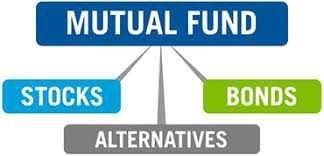
Investing in stocks is an outstanding approach to grow wealth. But how to start? Follow the explanation below to learn how to invest in stocks.
There is a difference between understanding that investing in stocks is a reasonable financial decision and understanding how to invest in stocks. If you are a beginner it can be very important. Yes, investing in stocks is a reasonable decision in any circumstances. But do you know how to invest in stocks? It isn’t just about picking some stock and putting the money. For many people, the stock market is a big enigma but it hasn’t to be. Also, many people are questioning how to invest in stocks and still, this is complicated for them. So many potential investors are scared to start investing.
But we have to say they are making maybe the biggest mistake in their lives. There are so many benefits of investing. The effort that it takes to learn how to invest in stocks, will result in great benefit. Anyway, the advantages of investing far outweigh the efforts spent to learn. One thing is for sure, investing in stocks isn’t frustrating at all. At least, it shouldn’t be.
So, let’s start.
We are going to explain how to start investing in stocks
First of all, you can buy and sell shares in any public company at any time. The principle is almost the same as any other business. The point is to buy a share of stocks in the company when it is cheaper than its actual value. The next step is to hold on for some time until its value has risen to the position that you feel satisfied to sell it for a profit.
So a successful investment could be (please keep that in mind this is a made-up example) as followed. Let’s say you bought a stock of a company and you paid $20 per share. And you hold on to this company for 3 years. After that period of time, your stock has grown at $50. You wouldn’t like to miss this opportunity for profit and earn 2.5 times more than your initial investment was. Even better is if you bought a dividend-pay stock so you can gain profits along the way without selling any of its shares.
How really to invest in stocks
You cannot start without any knowledge about it. Therefore, you have to know the fundamentals of investing. The main goal of investing is to make money. That will not be complicated if you have a plan and investment strategy. So, we already said that investing is simply buying assets that are supposed to grow in value. That can be stocks, bonds, ETFs, mutual funds. But keep in mind that you don’t have guarantees that your investment will increase in value over time.
You are wary of taking risks now, aren’t you? Don’t be, we know your hard-earned money can be at risk. You may choose some low-risk investments, for example, bonds. But historically, stocks generated larger returns than bonds. And you are seeking wealth. You may ask why to invest and not put your money into a savings account. Well, investments will give you higher returns, particularly over a long time.
But you have to decide where to invest, what are your financial goals. We are talking about how to invest in stocks. And if you follow some rules it can be safe and provide you high returns.
Let’s buy our first stock
As a beginner investor, you can invest for the long-term or invest in companies that mean something special to you personally. It is always easier to make a success with the long term-investing. Trying to make short-term profits can be a tricky part for new investors.
So, in short-term investing, you have to know when to buy and sell. That requires great research, education, and a bit of luck. Yes, why not say that. If you choose a long-term investing, all you have to do is pick a great company at a fair price. Your stock will increase in value over time. The possible costly errors will be reduced as the longer your investing horizon is. Invest in companies that you are already familiar with.
Okay, let’s assume you found a company you would like to invest in. So, you can buy shares in that company through a broker. Brokers provide you to easily do that. Remember, they are charging a fee for the services. Buying stocks is simple like you are picking something from the online catalog. Just pick the stock you want, the number of shares you want, and your purchase is completed when you put money. You have great options with online brokers but you have to check them before starting working with them. Also, online brokers will charge you lower fees. How to choose a broker you will find HERE.
Follow three basic strategies when investing
Start investing earlier
If you want your money to work for you, and you start investing as soon as you can, the more chances it will have for growth.
Stay invested as long as you can
This is something about compounding returns. The point is to stay invested, meaning don’t go in and out of the market. If you stay invested you’re able to earn more money than you have already earned.
Risk management
You’ll need to spread out your investments to be able to handle the risks. Never put all your money in just one investment. It is too risky and dangerous. Diversification is the recipe for successful investing. When you have several investments added to your portfolio, the risk of losing money is lower. Some of your investments will be winners, some will not. But over a long haul, you will profit.
Stocks pay you dividends
That will provide you a stream of income and without having to sell even one share. We know you’ve heard how investors are interested in the drop and rise of the value of stocks. But, trust us, they are very interested in the dividends paying stocks. To make clear what dividends are. They are amounts that the companies are paying to their stockholders for each share of stock they hold. It is commonly less than one dollar, for example. But…
Let’s say you want to buy shares in the company at $10 per share. And you want to invest $2.000. So, you’ll have 200 shares of that company. That company pays a dividend of $0.10 quarterly. What does it mean? This means you will have $20 every three months, $0.10 x 200 = $20. It isn’t much, but for one year you will receive $80 and you can reinvest it or buy some other stake of shares in different companies. Anyway, it is an additional income from one stock. When you become a large investor, dividends only could provide you a nice life. For example, instead of $2.000 investment, you were able to invest $2.000.000. In this case, you would own 200.000 shares of the stock mentioned in our example. That would mean you could have a $20.000 per quarter or $80.000 per year just in dividends. Not bad, right? Moreover, you didn’t need to sell any of your stock.
The companies can change their dividends. It is normal. They can pay out a smaller dividend per share or raise them. You have to know that dividends are not guaranteed. They are just a nice bonus, particularly with a solid company with a long history of raising dividends.
How to invest in stocks in four steps
It is very important to estimate what some company means to you. If the company has some meaning to you, you’ll be more interested in it. You’ll be more inspired to research it and you can invest with confidence. So, that will be the first step before starting investing in stocks. Find and examine a company that means something to you.
The second step is to examine how the company prevents its rivals to take over the control over its market. In other words, it is a so-called moat. Big companies with famous brands have a moat, for example. They are unique in the market, well-recognized, and well-positioned. The competitors can stay on the coast and cry but you will have a safe investment.
Also, pay attention to management. Are the people who are the leaders of the company competent? You don’t want to invest in the company which is led by corrupted managers.
But maybe the most important part of how to invest in stocks is to find a company with a high safety margin. It is a financial ratio that estimates the number of sales that exceed the break-even point. In other words, that is the point where the company stops being profitable.
Also, the safety margin represents the difference between the intrinsic value and the market price of stocks. To calculate the safety margin use this formula:
Safety margin = sales – the break-even point
Bottom line
You may ask how much you should invest in stocks.
The amount of money you should invest in stocks is up to you and your financial condition. Never invest more than you can afford to lose, that’s the rule. Even the smartest and most advanced investors sometimes can be dried. Never invest in something you can’t understand. Always calculate the risks. In that way, you’ll be able to recognize the potential reward and the probability of loss. Does the stock have a history of giving returns, how losses could occur, are important questions and you have to find the answers.
Don’t jump into the stock market without knowing why. Do detailed research to avoid big losses and failures. Your most important step should be to research the companies, though. The final step is to buy a stock and start getting rewards.
While this article isn’t meant to cover everything you need to know about investing in stocks or everything on how to invest in stocks. That is the no-end process. For more to know, participate in our Full Trading & Investing Course.







